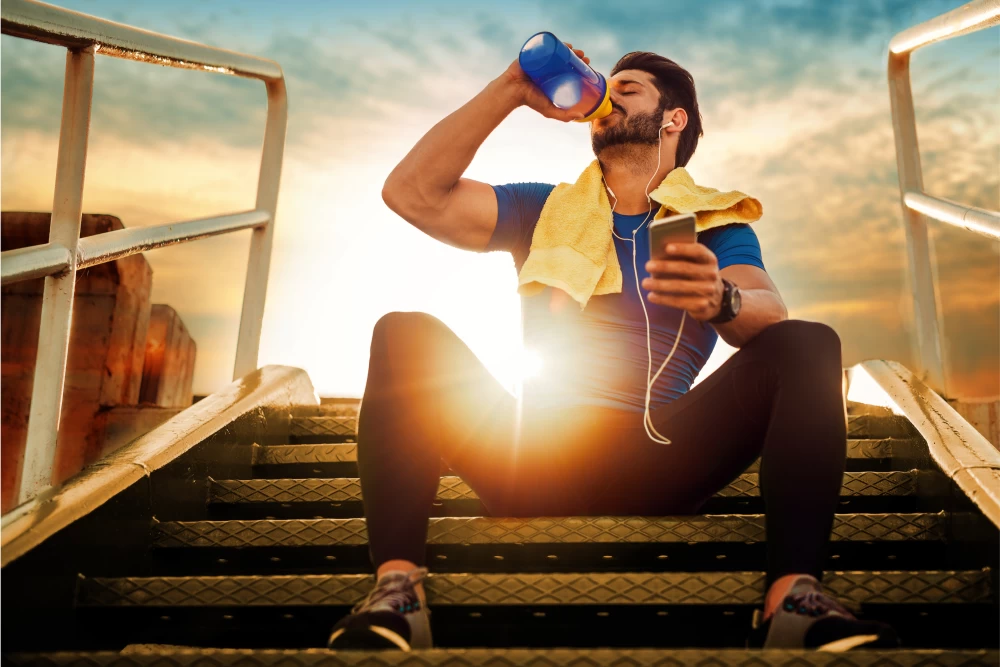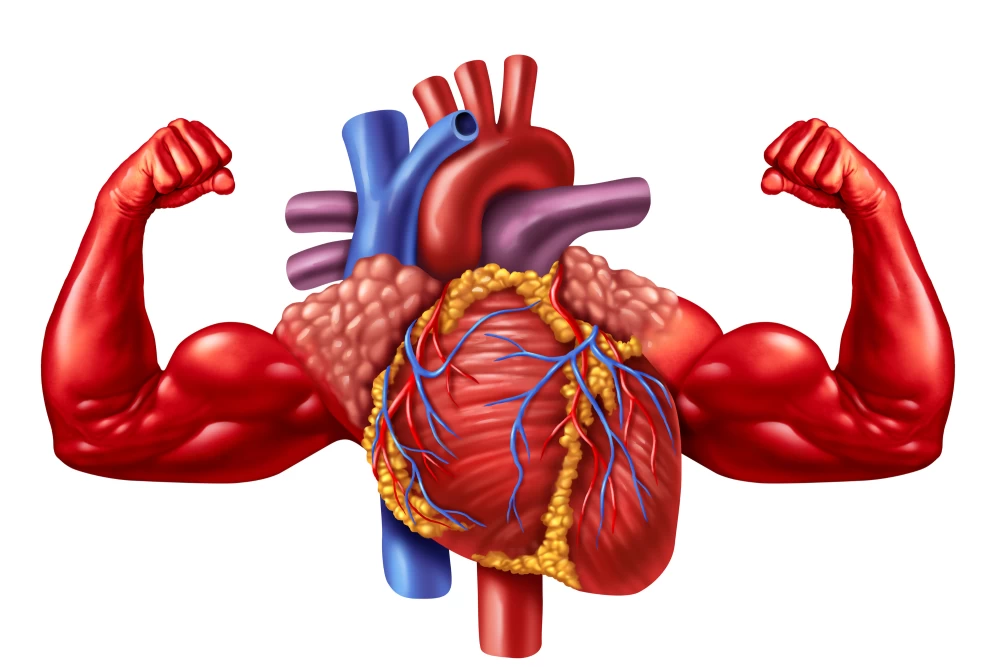
- 18th July 2023
Table of Contents
- Athletes must prioritise rest and rejuvenation
- Balls of Foam
- Uses and advantages
- Participatory Healing
- Gentle exercises to speed up the healing process
- Insomnia and Poor Diet
- Consequences for recouping and performing
- Massage and stretching
- Methods of alleviating pain and increasing range of motion
- Frosty Soaks
- Advantages and appropriate applications
Athletes must prioritise rest and rejuvenation
Athletes need time to rest and recuperate as an integral part of their routine. It's essential for the body to rest and recover after strenuous exercise to avoid getting hurt or sick. Stretching, ice baths, massage therapy, and foam rolling are just a few examples of recovery techniques, but good nutrition and fluid intake are also crucial.
Reduced muscle soreness and fatigue is a major benefit of recovery for athletes. Muscles can become damaged or inflamed from strenuous exercise or competition. By reducing inflammation and increasing blood flow to the injured area, recovery techniques hasten the healing process. Athletes also benefit greatly from recovery because it leads to higher levels of performance.
By allowing the body ample time to heal in between training sessions or competitions, regular recovery practises can reduce the risk of overuse injuries. Before returning to strenuous physical activity, athletes can use this rest time to assess their progress, make any necessary changes to their training plans, and refuel their minds. As a whole, an athlete's health and athletic performance can benefit from making recovery a priority in their routine.
Balls of Foam
Athletes frequently use foam rolling as a means of rehabilitation. Using a foam roller is a great way to relieve muscle tension and increase flexibility. The IT band, the calves, and the back are just a few examples of tight spots that benefit greatly from foam rolling.
Foam rolling has been shown to increase range of motion, decrease muscle soreness, and enhance circulation. Injury prevention is aided by its ability to keep muscles flexible and free of adhesions. Foam rolling is a great stress reliever and can be done at any time of the day, not just before or after exercise. Using proper form and avoiding overuse, foam rolling is generally safe for most people.
If you're just getting started, go easy at first and build up your strength. Furthermore, if you're experiencing pain or discomfort that goes beyond typical muscle soreness, foam rolling is not a suitable replacement for professional medical care.
Uses and advantages
Foam rolling is a useful method of recovery for athletes. Flexibility, blood flow, and muscle soreness can all benefit from foam rolling. Muscle knots and adhesions can also be reduced, which helps reduce the risk of injury. Simply place the affected area on top of the roller and roll back and forth gently while applying pressure.
Depending on your level of comfort, you should spend anywhere from 30 seconds to 2 minutes on each muscle group.Foam rolling should be a part of every athlete's post-workout routine for optimal performance and injury prevention. Foam rolling is great, but it should not be used in place of stretching or a proper warm-up before working out.

Participatory Healing
Athletes are increasingly adopting the practise of active recovery to speed up their recovery times. Recovery from strenuous exercise can be aided by performing low-intensity exercises or movements. Active recovery is meant to lessen muscle soreness and stiffness by increasing blood flow and nutrient delivery to muscles.
Yoga, light swimming, cycling, jogging, and walking are all great types of active recovery. These actions aid in reducing inflammation, increasing circulation, enhancing joint mobility, and relieving stress. They can also aid athletes in keeping up their fitness levels while they are sidelined due to injury or rest. It's important to distinguish between active recovery and complete rest.
Active recovery can often hasten the healing process by helping to repair damaged tissues and reducing inflammation, though traditional rest may be necessary for severe injuries or illnesses. Athletes can maximise their performance by striking a balance between rigorous training and necessary rest through the use of active recovery strategies.
Gentle exercises to speed up the healing process
Athletes can speed up their recovery by engaging in low-intensity activities. The flushing out of lactic acid and other metabolic waste products that cause soreness and fatigue after intense workouts is aided by the increased blood flow produced by these exercises without placing undue strain on the body.
Walking, swimming, yoga, and cycling at a leisurely pace are all examples of low-intensity activities. The athlete is still moving and using their muscles without putting undue strain on their joints and tissues, making these types of activities ideal for active recovery. This improves the body's overall circulation, which carries oxygen and nutrients to where they're most needed.
Participating in low-intensity activities, such as yoga or stretching, can also aid in increasing joint and muscle mobility and flexibility while also fostering a state of calm. Athletes can recover from strenuous workouts more quickly if they include low-intensity activities in their post-workout routine. Gentle movement or stretching exercises, such as yoga, can reduce soreness and fatigue while improving overall physical health by stimulating circulation and promoting active recovery.
Insomnia and Poor Diet
When it comes to rest and rejuvenation, two of the most important factors for athletes are food and sleep. Muscles can only repair and grow, and inflammation can only be reduced, with enough sleep. However, getting enough of the right nutrients can help muscles bounce back from strenuous exercise.
Athletes need seven to nine hours of sleep per night, and it should be good quality sleep. Establishing a regular routine before bedtime and making the bedroom a soothing space can help. Dr. Pankaj Kumar, best dietician in Delhi, in a conversation, mentioned that athletes should eat a well-rounded diet of carbohydrates, proteins, and healthy fats to fuel their performance.
Proteins aid in muscle repair and growth, while carbohydrates provide energy for exercise. Omega-3 fatty acids and other healthy fats can help the body's inflammation response as well. Athletes can speed up their recovery time between sessions and boost their performance on the pitch or court if they put an emphasis on both sleep and nutrition.
Consequences for recouping and performing
Athletes' results often improve after implementing recovery strategies. If you give your body the time it needs to recover, it will be better prepared for your next workout or competition. Athletes frequently employ the method of stretching.
Stretching reduces the risk of injury and boosts performance by increasing flexibility and range of motion. Tense muscles are more vulnerable to injury and perform less effectively. Getting enough sleep and rest is another crucial part of the healing process. Tissues need sleep to recover from the stress of rigorous training or competition. Hormones like growth hormone are released during sleep and help repair and build muscle.
Reduced mental capacity, heightened vulnerability to injury, and subpar overall performance are all consequences of inadequate sleep. Last but not least, good nutrition is essential to getting better. Eating foods high in protein and carbohydrates after exercise is beneficial for both refuelling your body and promoting muscle growth and repair. Dehydration impairs both physical and cognitive performance, so staying well hydrated is crucial for reaching your full potential.
Massage and stretching
Athletes rely heavily on stretching and massage as forms of recovery. Flexibility and range of motion can be greatly enhanced through stretching, which in turn helps reduce the risk of injury and boosts efficiency. It's great for post-workout recovery and reducing muscle pain.
Athletes should stretch both before and after training, and should also make stretching part of their daily routine. Athletes can also benefit from massage, which is used for rehabilitation purposes. It improves circulation to the muscles, which helps flush out waste products like lactic acid that accumulate during physical activity. Reducing stress and increasing relaxation are two additional benefits of massage that may hasten recovery.
Athletes can benefit from a wide variety of massage techniques, including deep tissue, sports massage, and trigger point therapy. In conclusion, massage and stretching are two of the most important components of any athlete's post-game recovery routine. If athletes make them part of their routine, they can maximise their performance while decreasing their chances of injury and fatigue.
Methods of alleviating pain and increasing range of motion
Stretching is a common method used to increase range of motion and lessen muscle soreness. Athletes can speed up their recovery by combining static stretching with dynamic stretching or proprioceptive neuromuscular facilitation (PNF). While static stretching entails staying in one position for an extended period of time, dynamic stretching entails progressively increasing the range of motion.
By alternating between tensing and relaxing the muscles in question, PNF provides a comprehensive workout. Foam rolling, also called self-myofascial release (SMR), is another technique that can help alleviate muscle soreness. Athletes use foam rollers, which are cylinders made of foam, to apply pressure to muscle groups, thereby reducing scar tissue and increasing blood flow.
While SMR may cause some discomfort at first, it ultimately helps with muscle soreness. Finally, massage therapy is a great option for easing muscle tension and restoring mobility. By increasing blood flow and loosening tight muscles, massage can reduce soreness and stiffness. Depending on the situation, athletes may benefit from receiving a Swedish massage or a deep tissue massage. In general, these methods can help athletes in a variety of ways, whether they're trying to increase their range of motion or speed up their recovery time.
Frosty Soaks
After strenuous practise or competition, many athletes use ice baths as a means of recovery. By decreasing muscle inflammation and soreness, cold water therapy can hasten the healing process. Typically, athletes will spend 10 to 15 minutes submerged in water that is between 50 and 59 degrees Fahrenheit.
Although ice baths have been shown to be helpful, they aren't always a good idea. Avoid them if you have heart problems or poor circulation, as the low temperatures can narrow blood vessels and raise blood pressure. There's also evidence that ice baths can hinder performance improvements and prevent muscles from adapting.
Overall, ice baths should be used sparingly and only as part of a larger recovery plan that also includes getting enough rest, eating and drinking properly, staying hydrated, and stretching. Before implementing any new recovery techniques into your routine, it is also recommended that you consult with a sports medicine professional.
Advantages and appropriate applications
Athletes who want to keep performing at a high level must practise recovery methods. These methods are beneficial for maintaining a healthy body, reducing muscle soreness, and increasing flexibility. Foam rolling is a common method of rehabilitation.
Reduced muscle soreness and improved circulation are two of the benefits of foam rolling. Ice baths are another common method of rehabilitation. After strenuous workouts or competitions, ice baths can help reduce inflammation and speed up muscle recovery. They function by narrowing blood vessels, which both decreases swelling and removes toxins from the muscles.
It is recommended that athletes include stretching as part of their post-workout routine. Stretching can be helpful before bed because it increases flexibility, eases muscle tension, and promotes relaxation, all of which contribute to a more restful night's sleep. In general, athletes should incorporate these recovery strategies into their schedules according to their individual needs and training/competition schedules. Before trying a new technique, athletes should talk to a coach or doctor to make sure they're using it properly for maximum benefit and to prevent injury.
